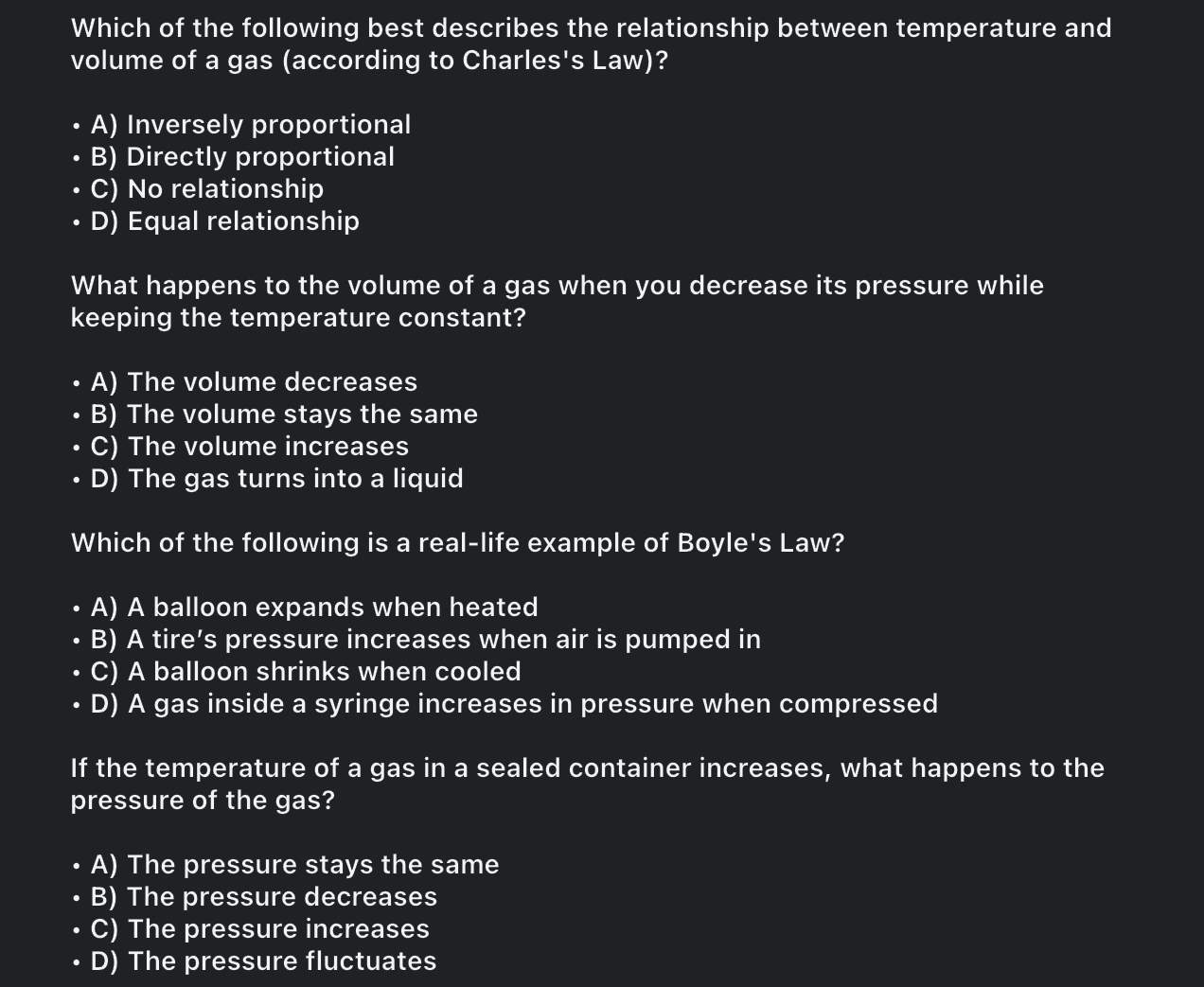Which of the following best describes the relationship between temperature and volume of a gas (according to Charles's Law)? What happens to the volume of a gas when you decrease i... Which of the following best describes the relationship between temperature and volume of a gas (according to Charles's Law)? What happens to the volume of a gas when you decrease its pressure while keeping the temperature constant? Which of the following is a real-life example of Boyle's Law? If the temperature of a gas in a sealed container increases, what happens to the pressure of the gas?

Understand the Problem
The questions are asking about the relationships described by Charles's Law and Boyle's Law in gas behavior under various conditions, including temperature, volume, and pressure changes.
Answer
1. Directly proportional. 2. The volume increases. 3. A gas inside a syringe increases in pressure when compressed. 4. The pressure increases.
- Directly proportional. 2. The volume increases. 3. A gas inside a syringe increases in pressure when compressed. 4. The pressure increases.
Answer for screen readers
- Directly proportional. 2. The volume increases. 3. A gas inside a syringe increases in pressure when compressed. 4. The pressure increases.
More Information
Charles’s Law states that volume and temperature are directly related at constant pressure. Decreasing pressure increases volume if temperature is constant. Boyle's Law exemplifies when pressure increases with decreased volume, like in a syringe. Increased temperature in a sealed container raises pressure.
Tips
A common mistake is confusing laws by mixing up which variables are held constant.
Sources
- The Simple Gas Laws - Boyle's Law, Charles's Law and Avogadro's - chem.libretexts.org
- Relating Pressure, Volume, Amount, and Temperature: The Ideal Gas Law - courses.lumenlearning.com
AI-generated content may contain errors. Please verify critical information